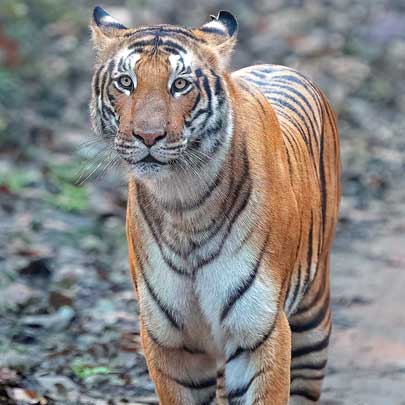Corbett National Park: A Journey Through Its Rich History
Corbett National Park, India's oldest national park, boasts a storied history deeply intertwined with the conservation movement and the evolution of wildlife protection in the country. Here's a captivating journey through the park's rich history:
-
Foundation and Origins:
- Established in 1936 as Hailey National Park, Corbett owes its inception to the pioneering efforts of British conservationist Jim Corbett. It was initially created to protect the endangered Bengal tiger, which faced severe threats from hunting and habitat loss.
- The park was later renamed in honor of Jim Corbett, who played a pivotal role in championing wildlife conservation and raising awareness about the need to preserve India's natural heritage.
-
Conservation Legacy of Jim Corbett:
- Jim Corbett, a legendary hunter turned conservationist, was instrumental in the establishment of Corbett National Park. His experiences in tracking and protecting tigers inspired the creation of the park and laid the groundwork for modern wildlife conservation efforts in India.

- Corbett's famous book, "Man-Eaters of Kumaon," chronicling his encounters with man-eating tigers and leopards, brought global attention to the plight of these majestic predators and galvanized support for their protection.

- Jim Corbett, a legendary hunter turned conservationist, was instrumental in the establishment of Corbett National Park. His experiences in tracking and protecting tigers inspired the creation of the park and laid the groundwork for modern wildlife conservation efforts in India.
-
Role in Wildlife Conservation:
- Corbett National Park played a pioneering role in the conservation movement in India, serving as a model for subsequent protected areas and wildlife reserves across the country.
- Its designation as a national park marked a shift towards proactive conservation strategies aimed at preserving entire ecosystems and flagship species, rather than merely controlling hunting and poaching activities.
-
Historical Significance:
- Beyond its conservation significance, Corbett National Park holds historical and cultural significance as well. The region is steeped in folklore, myths and legends, with ancient temples and archaeological sites scattered throughout the landscape.
- The park's diverse flora and fauna have been celebrated in literature, art and cinema, contributing to its allure as a premier destination for wildlife enthusiasts and nature lovers.
-
Evolution and Expansion:
- Over the years, Corbett National Park has undergone several expansions and boundary modifications to accommodate growing conservation needs and increasing tourist influx. Today, it encompasses a vast expanse of wilderness across the Himalayan foothills and the Terai region of Uttarakhand.

- The park's diverse habitats, including dense forests, grasslands, rivers and wetlands, support a wide array of wildlife, including tigers, elephants, leopards, deer and over 600 bird species.

- Over the years, Corbett National Park has undergone several expansions and boundary modifications to accommodate growing conservation needs and increasing tourist influx. Today, it encompasses a vast expanse of wilderness across the Himalayan foothills and the Terai region of Uttarakhand.
-
Conservation Challenges and Initiatives:
- Despite its conservation successes, Corbett National Park continues to face challenges such as human-wildlife conflict, habitat fragmentation, and poaching. Conservation initiatives led by government agencies, NGOs and local communities aim to address these challenges through community-based conservation, habitat restoration, and wildlife monitoring programs.
- Sustainable tourism practices and responsible wildlife viewing guidelines have been implemented to minimize the ecological footprint of tourism activities while maximizing the benefits to local communities and wildlife conservation efforts.
-
Legacy and Inspiration:
- Corbett National Park stands as a testament to the vision and legacy of Jim Corbett and the countless conservationists, foresters and local communities who have dedicated their lives to protecting India's natural heritage.
- Its rich history and biodiversity continue to inspire future generations of conservationists and nature enthusiasts, underscoring the importance of preserving wilderness areas for the benefit of both wildlife and humanity.
As visitors embark on a journey through Corbett National Park, they not only immerse themselves in the breathtaking beauty of nature but also pay homage to a legacy of conservation that has shaped the park's history and secured its place as a symbol of India's commitment to wildlife protection and environmental stewardship.












































































